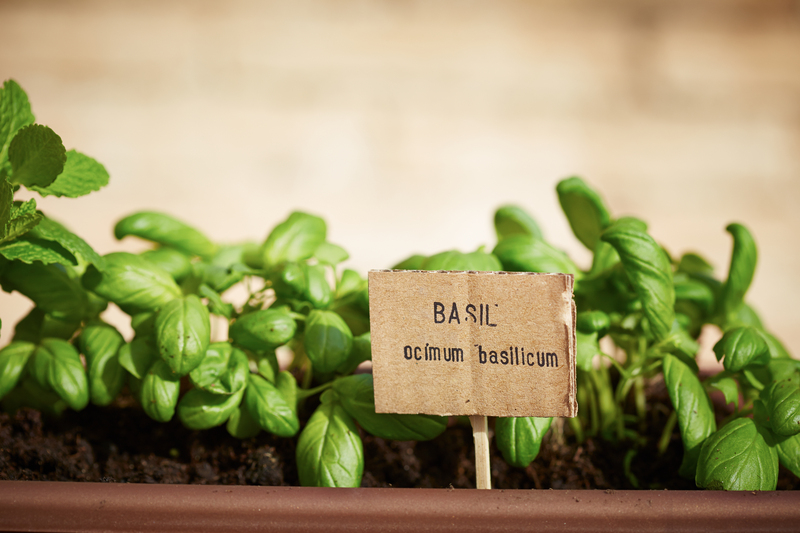Preserve Your Garden: Combatting Severe Weather Challenges
Posted on 01/06/2025
Preserve Your Garden: Combatting Severe Weather Challenges
Every gardener dreams of lush, thriving beds teeming with blossoms and ripe vegetables. However, severe weather challenges can quickly jeopardize these dreams, causing significant damage to even the most meticulously maintained gardens. Understanding how to preserve your garden in the face of unpredictable weather is crucial for ensuring years of beauty, productivity, and satisfaction. This comprehensive guide will explore expert tips and innovative strategies for protecting your garden from severe weather and maintaining its resilience all year round.

The Growing Threat of Severe Weather to Gardens
Weather extremes such as heavy rain, drought, frost, hail, and high winds are becoming increasingly common due to climate change. These severe weather conditions can wreak havoc by damaging plants, eroding soil, and spreading disease. Recognizing the unique threats posed by different types of weather is the first step to safeguarding your backyard oasis.
Common Severe Weather Challenges Faced by Gardeners
- Heavy Rain & Flooding: Leads to root rot, soil erosion, and nutrient leaching.
- Drought & Heatwaves: Causes water stress, wilting, and crop failure.
- Frost & Freezing Temperatures: Damages sensitive plants and can kill new growth.
- Hail Storms: Physically shreds leaves and wounds plants, opening them to pathogens.
- High Winds: Uproots plants, breaks branches, and accelerates evaporation.
Preparation: The Key to Garden Weather Resilience
Preserving your garden during severe weather events starts well before storms or droughts hit. Investing time in planning and fortification is the single best defense against unpredictable climate conditions.
1. Select Weather-Resilient Plants
- Choose native species: These plants have evolved to thrive in your local climate, often showing greater resilience to extreme conditions.
- Diversify your garden: Incorporate a mix of annuals, perennials, shrubs, and trees to spread risk.
- Research disease- and drought-resistant varieties for greater peace of mind.
2. Strategic Garden Design
- Utilize windbreaks: Hedges, fences, and strategically positioned trees protect delicate plants from powerful gusts.
- Implement raised beds: Elevating your garden prevents waterlogging during heavy rains and improves drainage.
- Plan for water flow: Design garden slopes and install French drains to channel excess water away from vulnerable areas.
- Mulch pathways and beds: Mulch acts as a buffer, controlling moisture and temperature fluctuations.
Defending Your Garden Against Specific Severe Weather Events
Combating Heavy Rain and Flooding
Heavy rainfall can quickly turn garden beds into swamps, suffocating roots and washing away precious soil. To preserve your garden from heavy rain, consider the following strategies:
- Install rain barrels and collection systems to divert rainfall and reduce surface runoff.
- Add organic matter such as compost to increase soil absorption and resilience.
- Utilize permeable pavers on paths to reduce runoff and improve drainage.
- Build raised beds to keep root zones above flood levels.
- Ensure gutters and downspouts are clear so water doesn't pool near garden beds.
Surviving Drought and Heatwaves
Extended dry spells can stress even the toughest plants. To effectively protect your garden from drought:
- Mulch deeply (2-4 inches) with straw, bark, or shredded leaves to conserve soil moisture.
- Select drought-tolerant plants like lavender, sedum, or ornamental grasses.
- Water early in the morning to minimize evaporation and fungal problems.
- Install soaker hoses or drip irrigation for efficient, deep watering.
- Group plants by their water needs to optimize irrigation scheduling.
Guarding Against Frost and Freezing Temperatures
Even a light frost can ruin tender new growth. To preserve your garden from frost damage:
- Cover sensitive plants with row covers, old sheets, or frost blankets during cold snaps.
- Use cloches or cold frames for early sowings and delicate crops.
- Add a layer of mulch to insulate soil and protect roots.
- Avoid pruning late in the season as this can trigger tender regrowth.
- Choose planting sites with good cold air drainage, such as gentle slopes.
Shielding Against Hail
Hail storms can devastate a flourishing garden in mere minutes. Try these tips to defend your garden from hail damage:
- Install temporary shields like netting, tarps, or even overturned baskets over vulnerable crops ahead of storms.
- Grow under permanent structures (greenhouses, hoop houses) for high-value or sensitive plants.
- Stake tall or floppy plants to help them recover after impact.
Bracing for High Winds
Sustained winds can break, uproot, or desiccate plants. To combat wind damage in your garden:
- Secure trellises, cages, and stakes before storm season.
- Construct living windbreaks using hardy shrubs.
- Prune trees and shrubs regularly to minimize sail effect and remove weak limbs.
- Space plants appropriately so dense canopies don't exacerbate wind damage.
Post-Storm Recovery: Helping Your Garden Bounce Back
Even with the best preparation, severe weather events may inflict some garden damage. Knowing how to respond after a weather emergency can make all the difference in your garden's recovery and long-term health.
Assess and Clean Up
- Inspect your garden immediately for broken branches, compacted soil, and pooling water.
- Clear debris gently to avoid damaging roots or trapping pests.
- Sanitize pruning tools before cutting any damaged plant material to prevent disease spread.
Foster Recovery
- Prune back damaged stems and leaves, removing only what's necessary so as not to stress the plant further.
- Re-stake or support leaning plants as needed.
- Replenish mulch, nutrients, and water as needed to aid recovery.
- Monitor for signs of disease or pests that may exploit plant wounds.
Long-Term Strategies for Sustained Garden Protection
Soil Health: Your Garden's Secret Weapon
Healthy soils improve plant resilience by enhancing root development, water retention, and nutrient cycling. For superior garden preservation against severe weather:
- Regularly add organic matter like compost and leaf mold.
- Rotate crops annually to prevent disease buildup and improve soil structure.
- Test and balance soil pH and nutrients each season.
- Use cover crops to prevent erosion and enrich the soil naturally.
Embrace Weather-Smart Gardening Technologies
Today, technology can play a vital role in your ability to weather-proof your garden:
- Install automatic weather sensors to track rainfall, temperature, and soil moisture.
- Use garden apps for severe weather alerts and personalized care reminders.
- Invest in smart irrigation systems for optimal watering under any condition.
Stay Informed and Build Community Resilience
- Join local gardening clubs to share resources and knowledge.
- Sign up for weather alerts from trusted local authorities.
- Maintain an up-to-date emergency plan for your garden and property.
The Importance of Biodiversity in a Resilient Garden
Biodiversity serves as insurance for your garden against severe weather. A variety of plants, including perennials, annuals, flowers, herbs, and vegetables, can buffer your garden from the total loss a single weather event might otherwise cause.
- Encourage beneficial insects such as ladybugs and bees, which aid in pollination and pest control.
- Incorporate companion planting to support pest resistance and overall plant health.
- Preserve natural habitats for birds and wildlife that help maintain balance.

Frequently Asked Questions: Preserve Your Garden from Severe Weather
What's the best way to protect young seedlings from heavy rain?
Use row covers, cloches, or temporary cold frames to shield seedlings from downpours. Ensure proper drainage below to prevent root rot.
How can I make my whole garden more drought-resistant?
Group plants by water needs, amend soil with compost, mulch deeply, and convert to drip irrigation for targeted, efficient water use.
Are there any quick solutions for unexpected frost?
Yes! Cover plants overnight with blankets, sheets, or upturned buckets. Remove covers in the morning to avoid overheating.
How do I deal with hail damage after a storm?
Prune and remove damaged leaves, check for open wounds, and treat plants with organic fungicide if needed to prevent infection.
Conclusion: Make Severe Weather Garden-Proof
Preserving your garden amid severe weather doesn't have to be overwhelming. With meticulous planning, resilient plant selection, proactive defenses, and responsive care, your garden can thrive--regardless of what nature throws its way. Start today by assessing your garden for vulnerabilities, adopting a few of these tips, and transforming your outdoor space into a weather-resistant sanctuary.
Your garden's success story is not just about surviving storms--it's about flourishing in spite of them!
```
